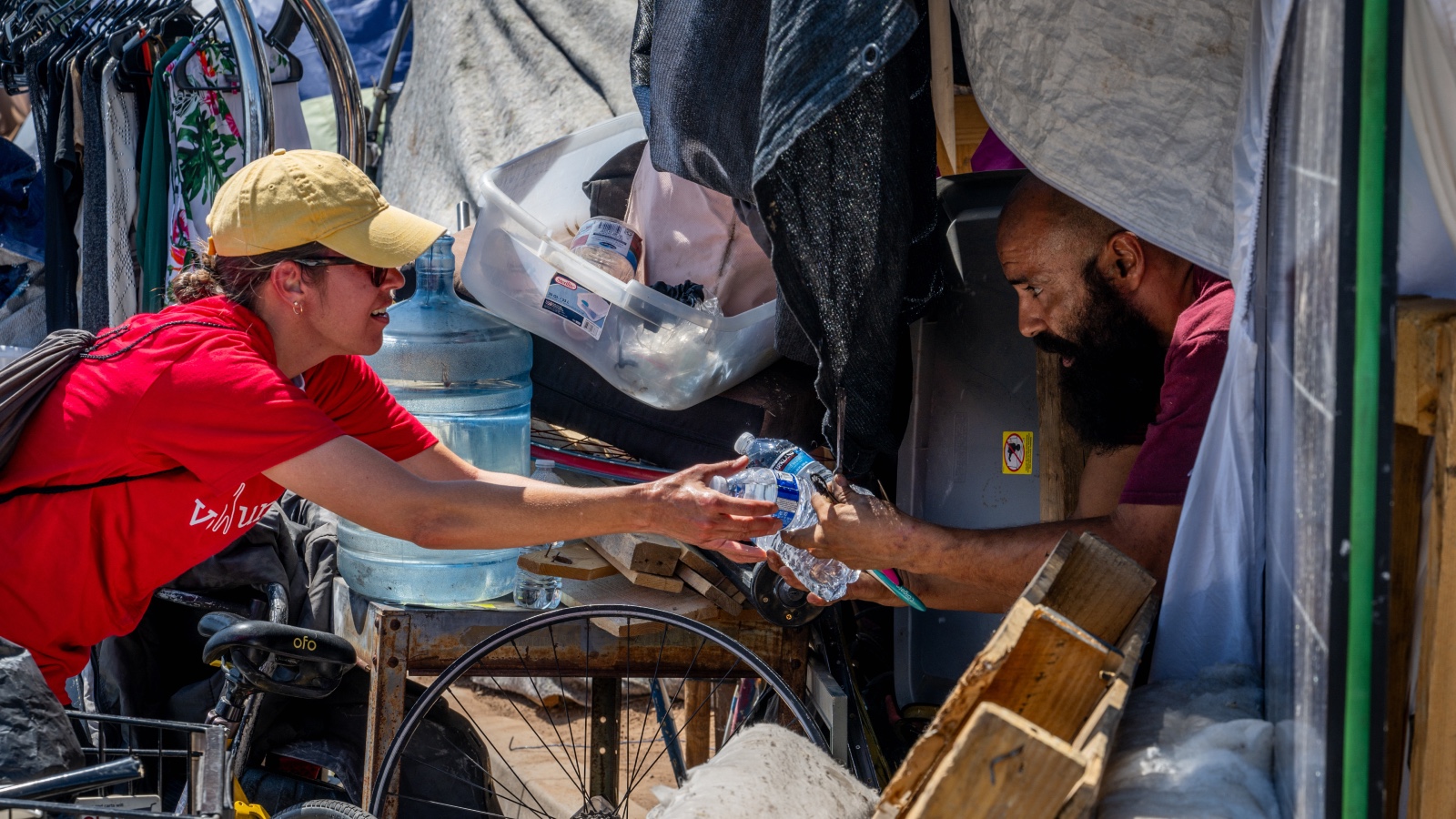This story is part of Record High, a Grist series examining extreme heat and its impact on how — and where — we live.
The 1.6 million people who live in Phoenix, Arizona, just experienced the hottest month ever recorded in a city in the United States, according to the Arizona State Climate Office.
On Monday, the city’s high fell to 108 degrees Fahrenheit — a temperature that might only be considered a relief after the hellish run that Phoenix was on: 31 straight days that registered 110 degrees F or higher. Temperatures dipped slightly this week in the nation’s fifth-largest city, but they’re expected to climb again by the weekend.
“When you’re over 110 degrees, even if you’re born and raised here and you’re used to dealing with the heat, it’s still very hot and very dangerous for everyone,” said Erinanne Saffell, Arizona’s state climatologist.
The city’s average temperature in July was 102.7 degrees F, the highest ever measured in the U.S. outside of California’s Death Valley, a bone-dry desertscape that’s thought to be the hottest place in the world. Daytime highs in July averaged above 114 degrees F, and nighttime lows routinely stayed above 90 degrees F. In Arizona’s Maricopa County, the heat has been so severe and has lingered for so long that the medical examiner’s office recently added refrigeration units to keep up with deaths from the scorching weather.
Phoenix’s record-breaking temperatures are a microcosm of the world’s. Globally, July was the hottest month in 120,000 years. Scientists have warned that this summer’s extreme heat has been a sign of what’s to come as the planet warms. The outlook is grim. Of all natural disasters — hurricanes, floods, tornadoes — extreme heat is the biggest killer, responsible for some 600 deaths a year in the U.S.
Amid the Southwest’s “heat dome,” which has lasted for weeks and at one point extended its grip around more than 100 million people, emergency rooms have filled with patients suffering a range of heat-induced injuries: from cramping, exhaustion, and dehydration to life-threatening burns caused merely by touching pavement.
“The hospital has not been this busy with overflow since a few peaks in the Covid pandemic,” an emergency room doctor in Phoenix told CNN in mid-July. Doctors have been placing patients in body bags filled with ice to cool down.
Nationwide, extreme heat could cost the U.S. $1 billion in healthcare expenses this summer alone by spurring 235,000 emergency room visits and 56,000 hospital admissions, according to one recent estimate. Most at risk are elderly people, outdoor workers, and those who don’t have access to indoor, air-conditioned spaces. In Phoenix, some residents are struggling to escape the stifling temperatures, as many of the city’s homeless shelters are full, the New York Times reported. So far this year, Maricopa County has reported 25 heat-related deaths and is investigating nearly 250 more.
The heat’s consequences haven’t stopped at public health. As Arizonans ramped up use of air-conditioning last month, the state’s demand for electricity broke records. Utilities have said they’re able to keep up with demand, but a power outage caused by a strained grid could send roughly half the city to the emergency room. Meanwhile, the heat has caused Saguaro cactuses to collapse, dried up watering holes for animals, and forced the closure of hiking trails.
As shocking as the blistering temperatures have been, though, they may not come as a surprise. Scientists have long been warning that climate change is making the world hotter. The Southwest’s heat wave, like the recent record-breaking heat in other parts of the world, was made significantly more likely by a changing climate. The world’s warming also means that heat waves are getting longer and hotter — and it’s increasing the chances of back-to-back heat waves, which can leave officials little time to respond to extreme heat before it strikes again.




